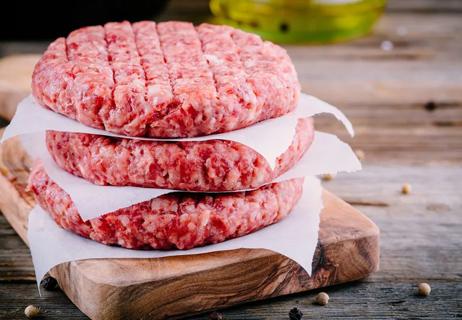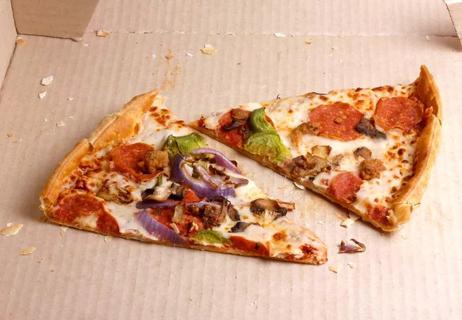Keep these tips in mind during hunting season

Autumn brings with it deer hunting season, and if you’re a hunter, there’s a lot to keep in mind about staying safe both in the field and when you return home with your spoils.
Advertisement
Cleveland Clinic is a non-profit academic medical center. Advertising on our site helps support our mission. We do not endorse non-Cleveland Clinic products or services. Policy
As hunting season begins, registered dietitian (and venison enthusiast) Beth Czerwony, RD, outlines what you need to know about cleaning your kill, safely storing the meat for consumption and more.
Preparing venison is like preparing any other meat — except that because you typically hunt it yourself, you often need to do a lot of that prep work in the field.
“It’s important that once you get that deer, you know how to process it as efficiently, as safely and as quickly as possible,” Czerwony says.
Here’s what you need to keep in mind in the field to ensure that you’re bringing home the highest-quality meat.
Infected deer become infected meat, so when you’re out in the field, keep a close eye on the animals you hunt to ensure that they look safe and healthy. Overall, don’t bring home a kill that looks diseased, sick or otherwise questionable.
Deer that look dazed, confused or emaciated may be exhibiting signs of chronic wasting disease — what is essentially the deer version of the better-known mad cow disease.
“These deer are often very thin and stumbling because the disease affects the brain and the central nervous system,” Czerwony says. “Their meat is contaminated and cannot be consumed.”
Advertisement
White-tailed deer can be infected with coronavirus but aren’t likely to transmit the disease to humans. The United States Department of Agriculture says, “Based on the information available, the risk of animals spreading the virus to people is considered to be low.”
Still, hunters should steer clear of contact with the lungs of dead deer, as a precaution.
Give your deer a once-over for skin troubles, including lesions and unhealed wounds. Sometimes fighting bucks can cause damage to one another with their antlers, causing wounds that migrate to the spinal column and result in infected meat.
Nature is beautiful, but it’s also full of bacteria. When you’re hunting in the middle of the woods and preparing meat for future consumption right there on the forest floor, it’s vital that you know how to keep the meat as clean as possible.
“All deer hunters need to know how to properly gut deer to avoid cross-contamination,” Czerwony says.
A dull knife can drag bacteria through the meat and raises the risk of nicking the organs. Bring a sharp, clean knife to make your cuts in the field, and use wipes to clean it off as you work.
Just like in humans, your deer’s internal organs are full of all kinds of, well, gunk (note the scientific medical terminology) that you don’t want to mess with.
“When you’re processing the deer in the field, you want to make sure you’re not nicking its intestines, bladder or stomach, which are full of waste materials,” Czerwony says. “You don’t want any of that waste material to get onto the meat itself.”
Once you’ve removed the aforementioned organs, don’t take them with you, as you risk spreading bacteria and contaminants. Instead, just leave them in the field to let nature run its course. Ah, the circle of life!
Bring a clean tarp into the field with you, and use that to get your deer back to your vehicle. Keep the deer on the tarp during the drive home, too, to ensure that it doesn’t pick up additional bacteria during transport.
When you return home to process your deer, work in a clean, disinfected space, whether it’s your kitchen, garage, basement or someplace else. “Any bacteria that was there prior can get transferred onto the meat,” Czerwony warns. Afterward, clean up with bleach.
“It’s very important that hunters understand how to properly store deer meat,” Czerwony says. “That includes right after it’s been shot, when it comes time to process it and when you’re packaging and storing it.”
Advertisement
Venison’s health benefits are many. For starters, it’s one of the leanest, heart-healthiest meats available — low in fat, high in protein and packed with zinc, haem iron, and vitamin B.
It’s also economical. “If you get two deer a year, you have enough food for the entire year,” Czerwony says.
“Venison is so versatile that you can use it for any type of protein, including burgers and steaks,” Czerwony says. “Anything you would use ground beef for, you can use venison instead.”
“If it’s not prepared and stored correctly, you can end up getting food poisoning and other foodborne illnesses from your deer meat,” Czerwony warns.
So how do you know if it’s gone bad? Pay attention to the following:
Advertisement
When it comes to hunting, there’s a ton to learn. If you’re new to it, it’s best to learn from a professional how to do the prep work the right way — and the safest way.
“New hunters should go through a hunter safety course,” Czerwony advises. “The whole idea behind hunting is to be able to enjoy the meat you’ve hunted, so you really want to make sure you know how to do that correctly.”
Advertisement
Learn more about our editorial process.
Advertisement

Leftovers can be kept in the fridge for three to four days or frozen for three to four months

Ultimately, rice is safe to eat, but the type, where it’s grown and how you cook it may be factors to consider

Washing your hands, thoroughly cleaning kitchen tools and preparing meat separately can reduce the risk of foodborne illness

Extended outages lasting more than four hours can make food in your fridge unsafe to eat

Microwaves use non-ionizing radiation and haven’t been shown to cause cancer — follow food safety practices and use microwave-safe containers

Once perishable food hits the table, it’s typically good for about two hours

Color, texture, smell and expiration date all hold important clues

No! Be sure to put your leftovers in the fridge

Start having sex about 72 hours before ovulation, then at least every other day during your fertile window

Attachment theory suggests that your earliest relationships shape connections throughout your life

It isn’t a recognized mental health disorder, but research shows that problematic social media use can negatively affect your mental health, self-esteem and sleep